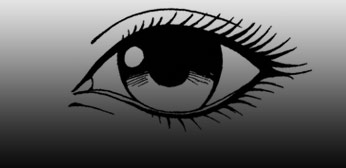A hypermetropical eye has weaker refractive strength than a normal eye (refractive hypermetropia), or it is too short (axial hypermetropia), so the image in it appears behind the retina. Uncorrected hypermetrope has to accommodate all the time in order to see clearly. Therefore, hypermetropes with smaller fallacy can see clearly at a distance. Hypermetropes whose size of refractive fallacy surpasses the power of accommodation, neither have clear vision at a distance, nor at close. Because of constant effort to accommodate, hypermetropes often feel discomfort and pain in their eyes, especially while reading and watching at close. Those are so called asthenopic impediments (asthenopia). Hypermetropia is corrected by convex lenses or by plus-lenses. Eyes looked at through those lenses look increased.
Causes:
The exact mechanisms that cause farsightedness are not laid; however, most research supports the theory of loss of elasticity of the crystalline lens; although, as a possible cause there are also suggested changes in the curvature of the lens, which are explained as a result of continued growth and strength loss of the ciliary muscle (the muscle that flexes and sharpens the lens). Much like gray hair and wrinkles, farsightedness is a symptom caused by the natural course of aging. The first symptoms (listed below) are usually first noticed between the ages of 40 and 50.
The ability of accommodation to close objects decreases with age, from the possibility of accommodation with 20 diopters (ability to focus from 50 mm) in a child, to 10 diopters with 25 years (100 mm), and it lowers onto 0,5 to 1 diopter with 60 years (ability to focus from 1 to 2 meters).

Symptoms:
First symptoms that most people notice are the inability to read small print, especially in low-light conditions, eyestrain caused by prolonged reading, blurred vision at close, or immediate blurry at changing the distance to which we look.
Many advanced presbyopes complain that their hands have become “too short” for reading at an appropriate distance. With the exposure to sunlight, farsightedness is less evident, much as other accommodation impediments. This is the result of pupil constriction. As with other lenses, by increasing the ratio of focal length and the aperture of the lens, the degree of turbidity of non-focused objects is decreased, and therefore the sharpness of the image is achieved. It was noticed that people with certain occupations and those with meiotic pupil ask for help much later when it comes to presbyopia. These are mainly farmers and people working at home; they ask for correction later, while those in services and construction companies seek vision correction earlier.
Treatment:
Farsightedness is not routinely treated – though attempts at discovering cure give indications that treatment might after all be possible – because the lack of ability to accommodate is corrected with eyeglasses or contact lenses. Persons with other refractory problems use convex lenses. In some cases, adding bifocal to existing lenses gives satisfying results.
To avoid the use of bifocal or reading glasses some people decide to use contact lenses for correcting one eye’s vision at close, and the other eye’s vision at a distance, by using “monovision” method. Monovision sometimes distorts depth perception. There are also no bifocal or multifocal contact lenses that at the same time try to correct vision both at near or at a distance with the same lens. It is controversial that eye exercises are suggested as a way of delaying the onset of presbyopia, but there is no evidence that they work.





 July 16, 2012
July 16, 2012